Do you feel that even though you have been exercising for a long time, you are not as good as others?
After practicing squats for so long, why are you still not able to squat to the level?
Feeling "stuck"? The knees are also not very comfortable.
Low back pain, hip pain? You may subconsciously feel that "exercise hurts the knees and waist",
However, in fact, behind these appearances, the real reason may be,
Something is wrong with your hip mobility!
一. Why is hip mobility important?
Our hip joint consists of the femoral head and the acetabulum.
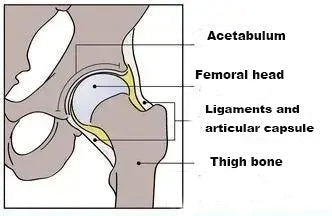
The hip joint is the joint that connects the femur and the pelvis. As a typical ball-and-socket joint, the hip joint can perform various movements.
Including: flexion/extension, adduction/abduction, internal/external rotation.
The hip joint is one of the indispensable and important joints for maintaining human movements.
It is in a position connecting the up and down, running through the left and right, and plays a pivotal role in the movement process [1].
Hip flexibility and mobility are important for movement.
Good hip mobility improves athletic performance, as well as activities of daily living.
For non-fitness people, especially sedentary people, poor hip joint flexibility is a common cause of knee pain and low back pain.
For the fitness party, the spirituality necessary for high joints is the prerequisite for high-quality training.
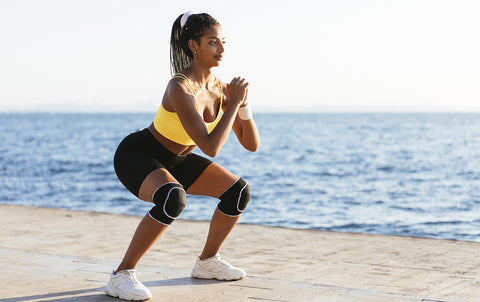
People in contemporary society, go to work + go home and sit for 8-10 hours a day,
The supine flexors and rectus femoris become zombies, and the joint flexibility becomes poor.
When the flexibility of the hip joint is insufficient and limited, not only will it be impossible to complete a certain action normally,
but it will also cause damage to the nearby joints, affecting the lower back, legs, knees, and ankles.

For example, when you squat with your own weight, you can't squat down, and you feel that your hip joints are stuck. In order to squat lower, you will bend your back or buckle your knees inward.

Improving the flexibility of the hip joint is conducive to correct, standard and efficient movement [2].
The recovery of hip joint mobility will improve speed, strength, and explosive power to varying degrees.
二.How is your hip mobility? Test yourself!
The Thomas Test is generally used to test the flexibility of the hip joint, and can also test the tension of the iliopsoas and rectus femoris.
Test method: First, sit on a bed or a bench with your hips on the edge, slowly lean your body backwards, and at the same time hold one knee with your hands, leaning as far as possible toward your chest (as shown in the left picture below).
After lying flat, continue to hold your knees, and let the other leg hang down naturally. Ideally, the leg without the knee tuck should be able to touch the table, and the calf should be perpendicular to the thigh (as shown on the right in the figure below), indicating that the hip joint has a good range of motion.

If you: ①Your thigh cannot touch the table and you lift it up, it means that your hip flexors are tight.

②The thigh can be flat against the table, but the calf is extended, which means that the rectus femoris is tense.

③ If the thigh cannot be flat against the table and the calf is extended, it means that the hip flexors and rectus femoris are tight.

三.How to improve hip flexibility?
Through targeted training, the flexibility of the hip joint can be improved and the range of motion of the joint can be increased [3].
The following set of daily exercises will take you to improve hip flexibility.
Action 1 Sit-up joint rotation
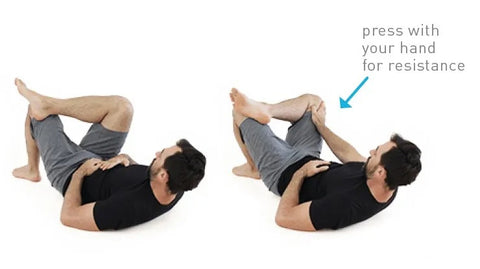
Action points:
- Starting position: Lying flat, legs bent
- Cross one leg and place the ankle on the other knee
- Put your hands on the knees of the crossed legs and slowly apply pressure
- Press the knees with your hands and keep stretching for 15-30 seconds
Action 2 Piriformis Stretch
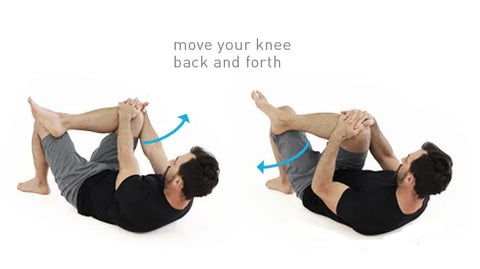
Action points:
- Starting position: Lying flat, legs bent
- Hold the knee above the cross with both hands, and slowly pull it toward the opposite shoulder
- Hold the stretch for 15-30 seconds
Action 3 adductor stretch

Action points:
- Starting position: Sit on the mat, put your feet together, push your knees to the ground with force
- Use your hands to support your sides behind you, keeping your back from arching
- Hold the stretch for 15-30 seconds
Action 4 Frog Stretch

Action points:
- Starting position: bent over, hands on the ground, knees on the ground
- Slowly increase the distance between the knees, within the range you can bear
- Tighten the abdomen, keep the lumbar spine stable, and move the entire torso backward at a uniform speed
- Return to the starting position and repeat, trying to slowly deepen the range of motion
Action 5 dynamic lunge stretching
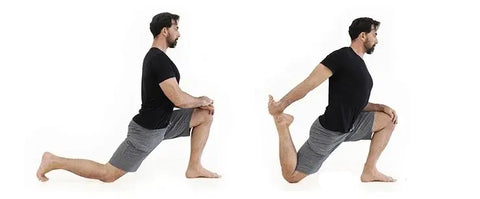
Action points:
- Starting position: the body is upright, the left foot is stepped forward, the left knee is bent at 90 degrees, and the center of gravity of the body is on the left foot
- Feet pointing forward, right leg extended back, hip-width apart
- Keep upper body neutral, hips engaged, pelvis square
- Lower the buttocks slowly until the iliopsoas feels stretched, hold for 15-30 seconds
Action 6 Dynamic Adductor Stretch

Action points:
- Starting position: sitting position, legs straight, hands behind the sides
- Use your hands to support the ground and send your hips forward, as close to your heels as possible
- Return to the starting position and repeat back and forth
Action 7 dynamic hip transformation

Action points:
- Starting Position: Squat as low as you can, with your hands on the ground by your sides
- Rotate one knee inwards toward the ground
- Return to starting position, switch to other side, repeat
Action 8 Pigeon Stretch
Action points:
- Starting position: The knee of the front leg is bent at 90 degrees, and the rear leg can be kept bent or straightened within its own comfortable range
- Keep the torso upright, lean forward, increase the angle of hip flexion, and stay in this position for 10-30 seconds when you feel the gluteal muscles being stretched
- Keep breathing evenly, don't hold your breath during stretching
For the above set of actions, each action is performed 5-10 times, and the stretch is maintained for 10-30 seconds each time.
Practice daily if you can.
You don't have to do it for too long at a time, 10 minutes is enough for the whole set, and the more important thing is the frequency of practice.
You can do it when you wake up in the morning, and of course you can do it at night when you are free.
The most important thing is to find the time that suits you and stick to it.


